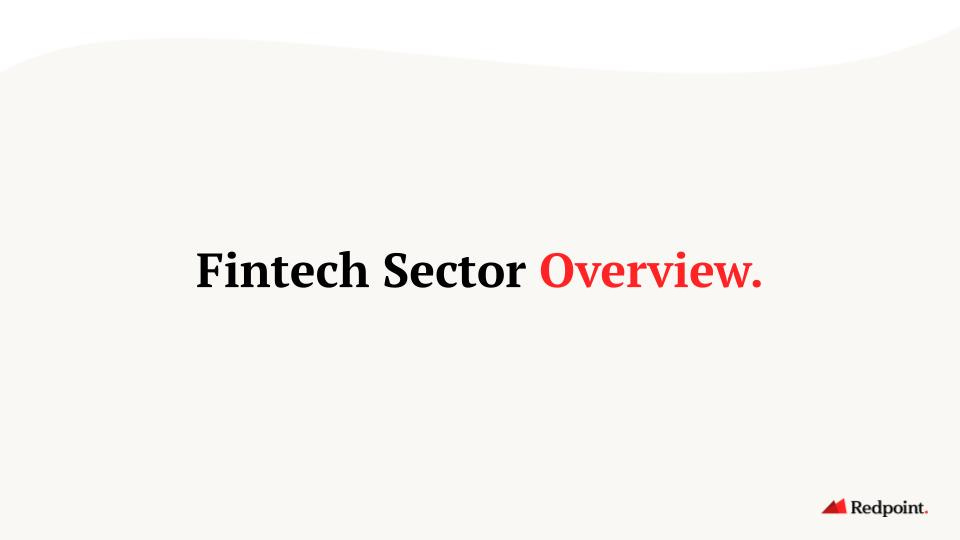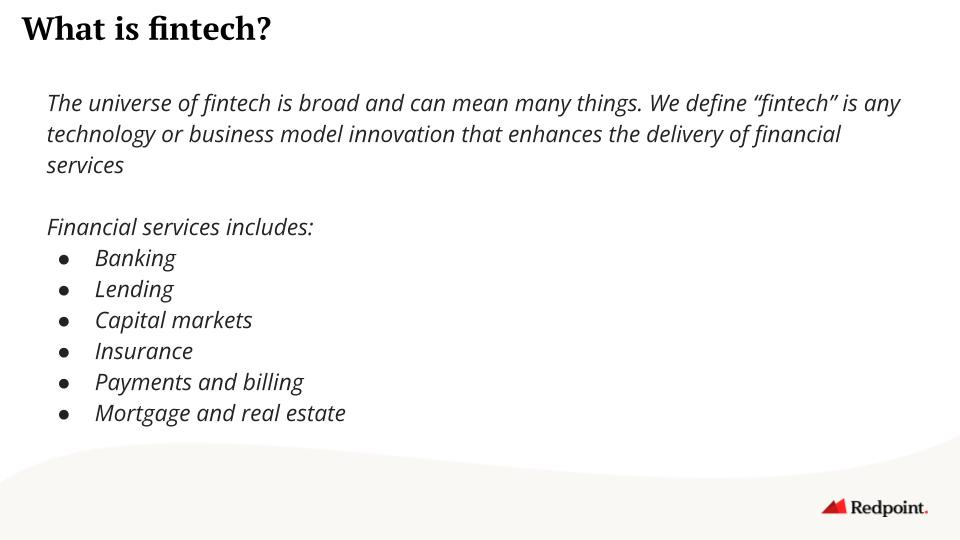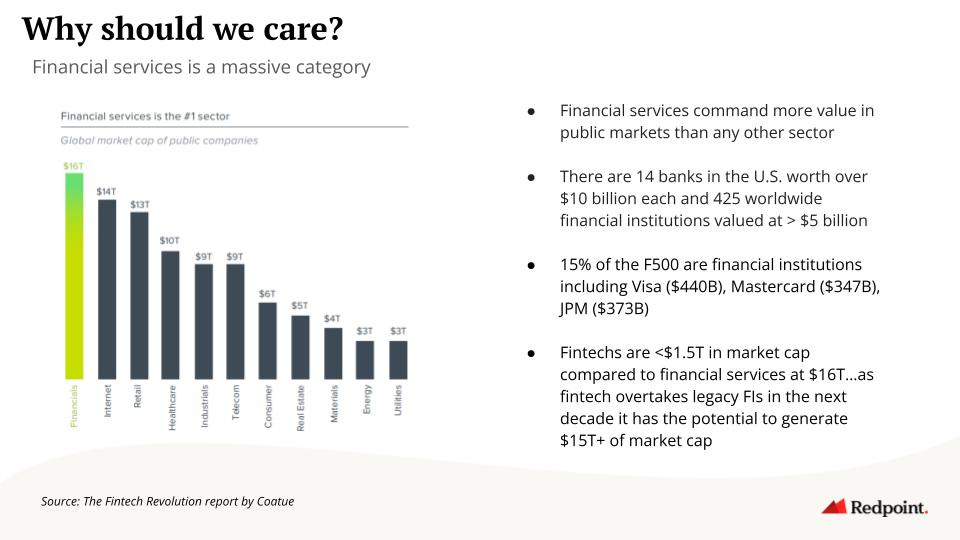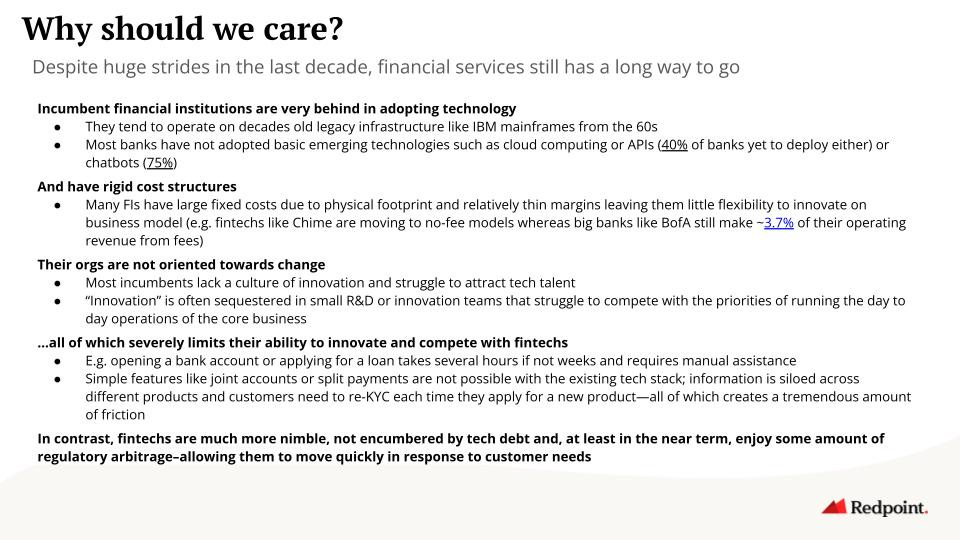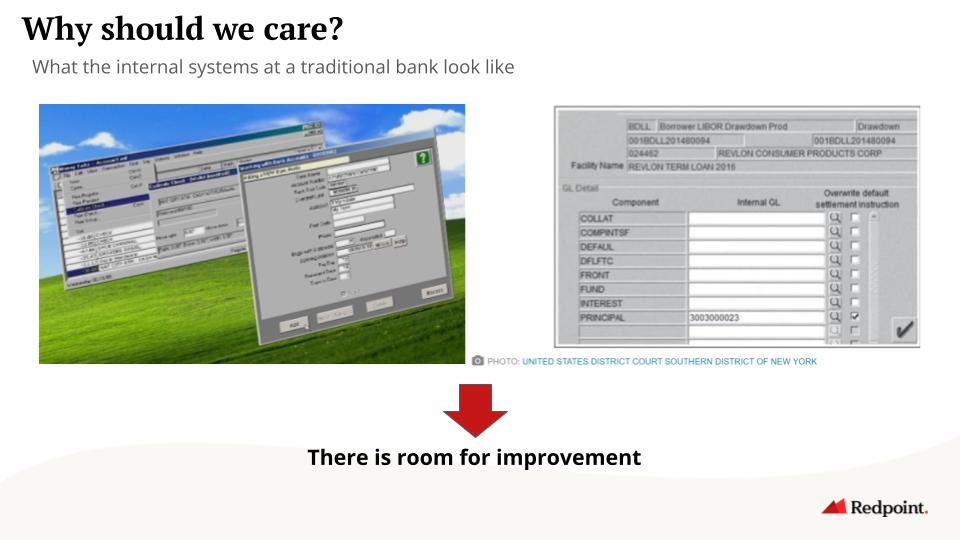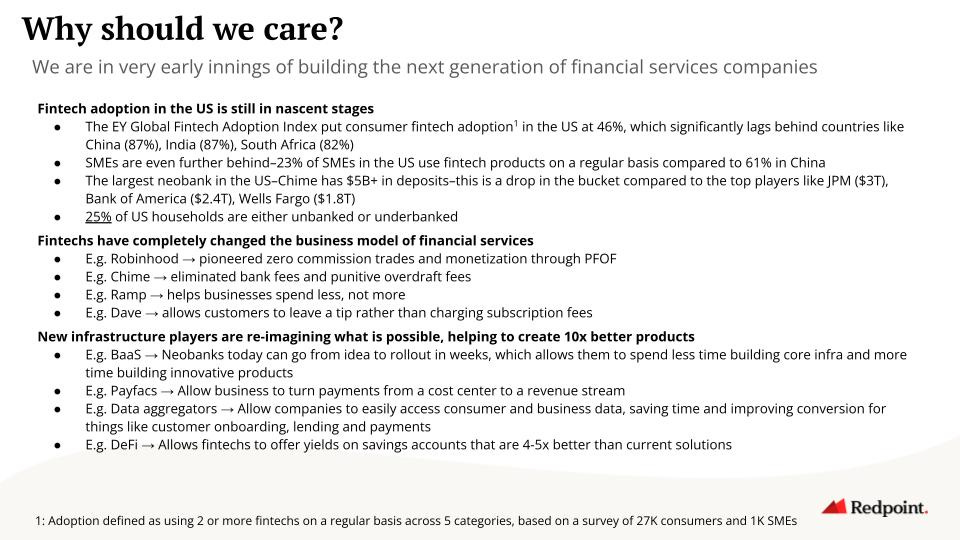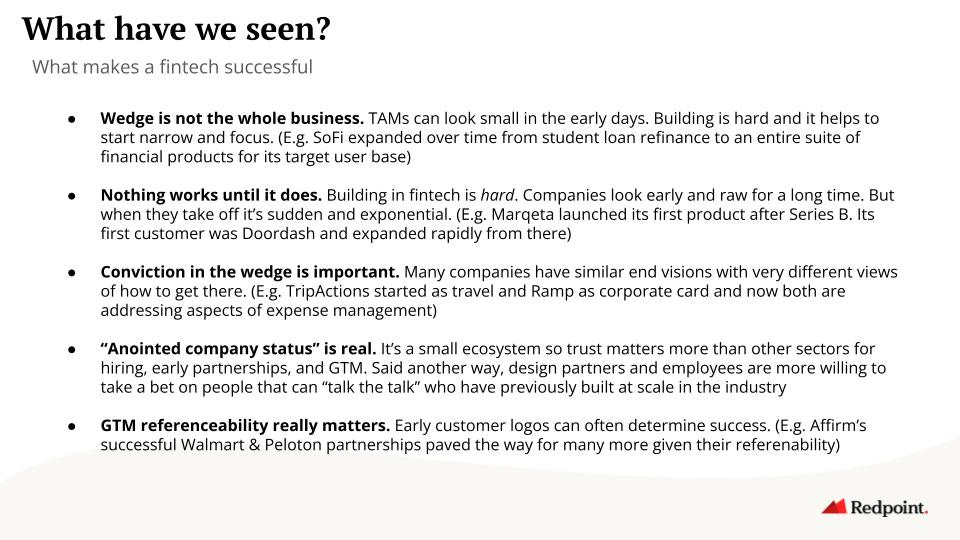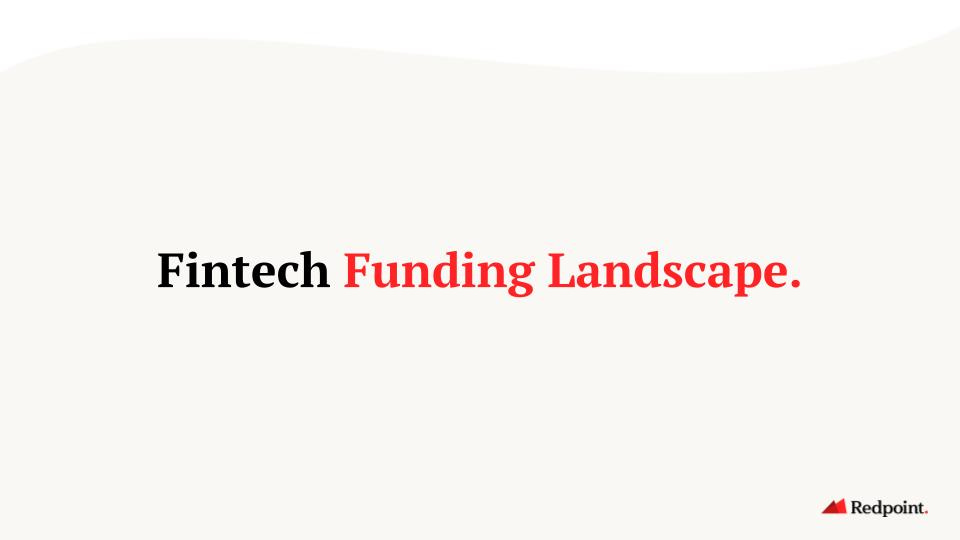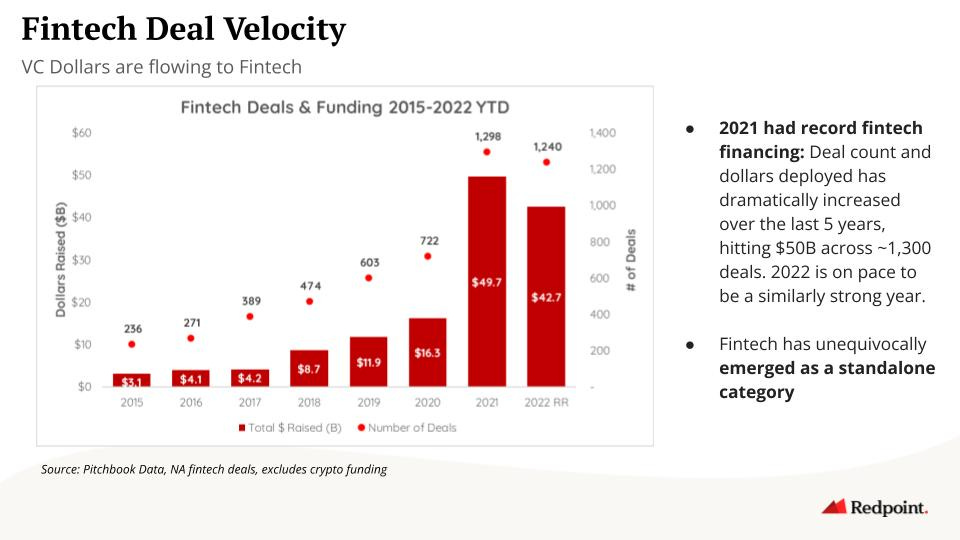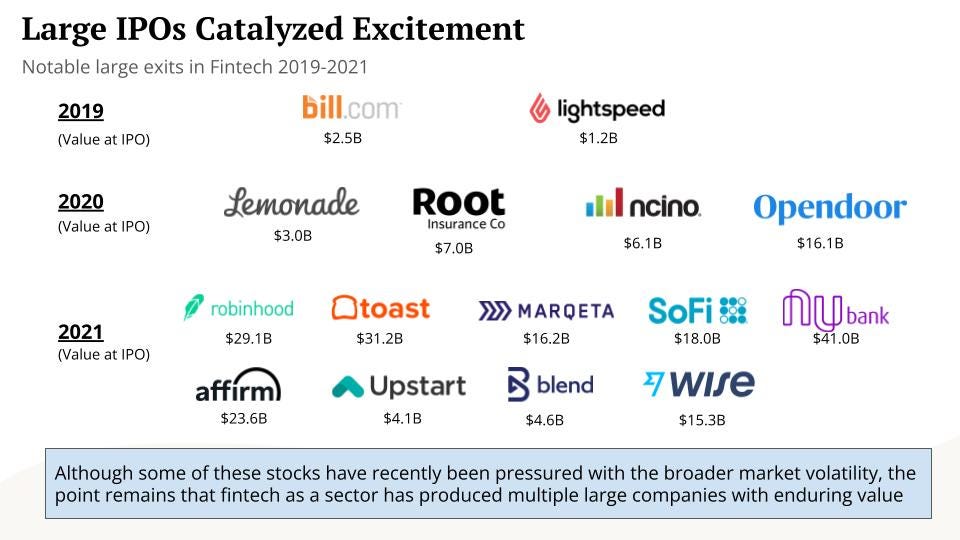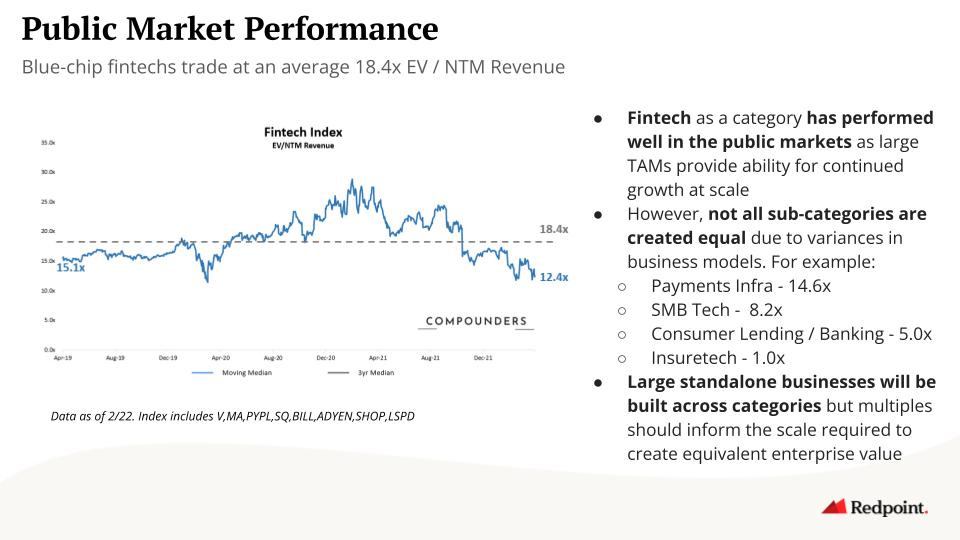Make Cents: What is Fintech & Why You Should Care
Recently, Emily Man, Urvashi Barooah & I decided to go back to the fintech basics. We worked through some questions that seem simple on the surface but that I actually found tough to unpack given the breadth and depth of the category. Below are some of the slides we shared with our colleagues at Redpoint Ventures last quarter* laying out what we believe fintech is, why it’s important, and what the funding landscape has been like.
A few key takeaways:
There is no one clear answer on how fintech should be defined, even among people who have been deep in the industry. Below is one take
Traditional FIs have scale and resources but are structurally limited in their ability to innovate. This = opportunity
The next generation of fintech is in the early innings. There is still significant opportunity to drive consumer adoption and innovate on cost and distribution
Public and private market investors are excited, and fintech has emerged unequivocally as a standalone category
Some interesting data:
Financial services is the largest industry by market cap (>$10T) and fintechs represent <$1.5T. I am excited for the next decade of fintech as it continues to grow, both as a share of the overall pie but also as an enabler expanding it
Despite recent market volatility, fintechs have performed well in the public markets, averaging at 18x EV/NTM. It’s important to note, though, that there is significant variance in multiples across sub-categories
Investors continue to be excited about the sector’s potential. Venture capital invested $50B across ~1,300 deals in 2021
I’ve learned a lot from meeting hundreds of early stage fintech companies at the earliest stages and watching them grow over time.
Observations on what drives success in fintech:
Companies start with an initial wedge that can seem narrow. As a result, total addressable markets (TAMs) can look small in the early days but the best companies expand their product offerings over time
Therefore conviction in the wedge is key - I’ve seen dozens of companies going after the same end vision with wildly different starting points. Building the right initial product for a high need use case earns companies the right to expand their product offering over time
It can take a long time to “work” - Building in fintech is hard and companies can take awhile to take off. But when they do it happens *fast*
As a result early signals matter more than in other sectors - Trust is key in the early days for hiring, design partners etc. The early customer logos can determine success
Read on below for more detail and examples!
I also built a fintech market map and shared my POV how I categorize the industry and why. It is a meaty topic to walk through that deserves its own post which I am excited to share in the near future. Look out for it soon!
* While some of the specific valuation data has shifted since we put this together, the directional trends are still relevant and the takeaways remain the same.


